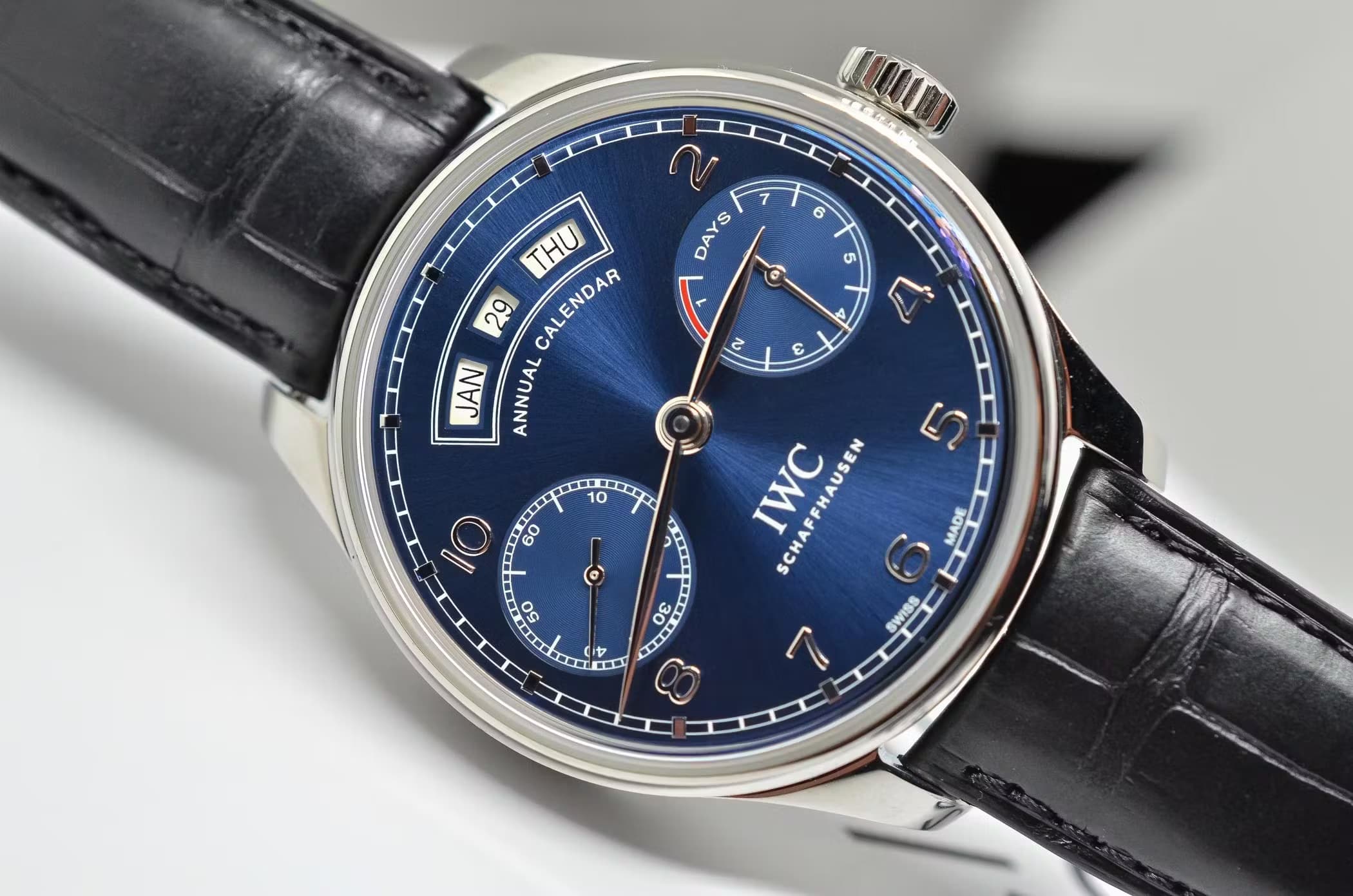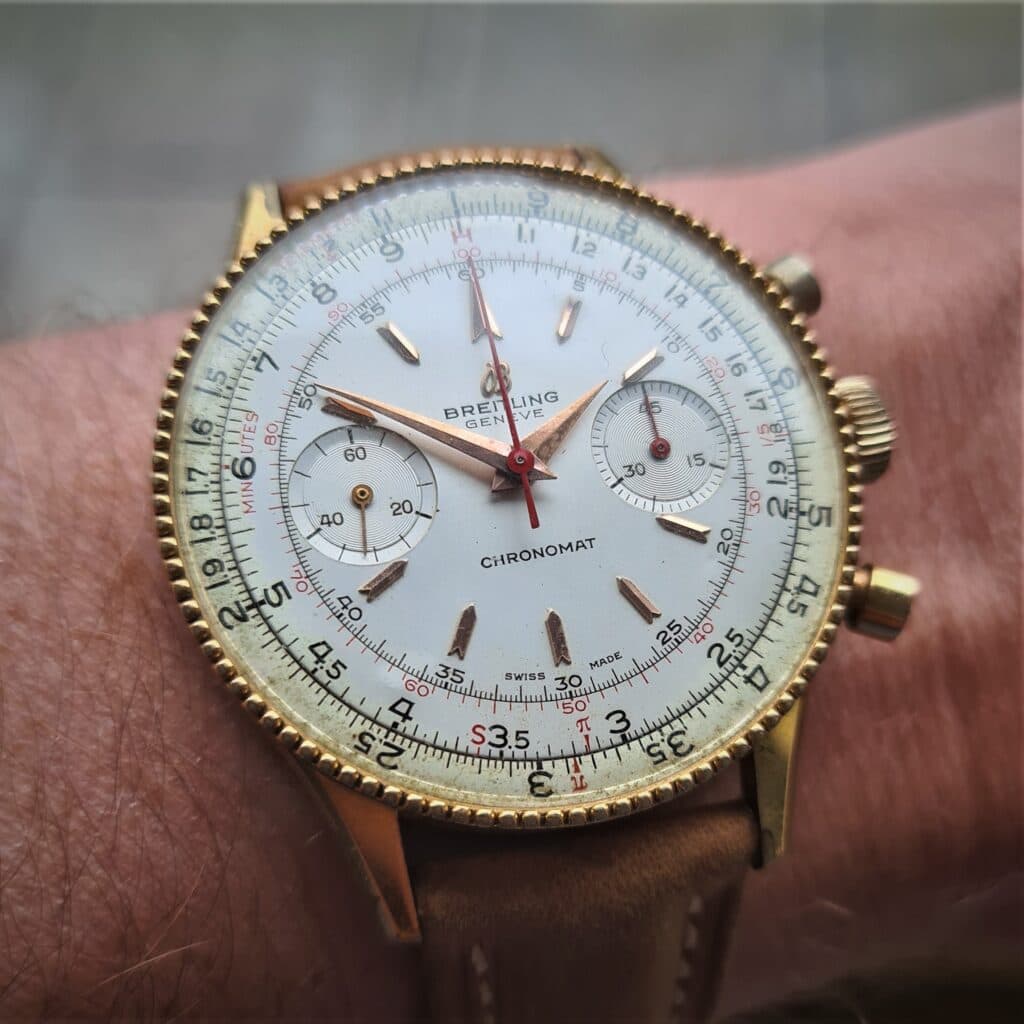One of the primary goals of The Watch Collectors Club is provide educational resources for our members. Our blogs highlight some of the stories and watches that make the world of watches so fascinating.
Over the course of the year, our blogs have explored a variety of complications, or additional functions, that you can find on wrist watches.
We’ve explained the chronograph, moonphase, the various time-zone watches, and some of the features that you find on watches designed for doctors.
As the year draws to a close, we thought it appropriate to explore two calendar movements: the annual calendar and the perpetual calendar.
The Annual Calendar
The annual calendar sounds like a relatively simple complication. It displays the correct month and date for the entire year. For example, it will display the 30th of September and then will change to the 1st October on the next day, rather than the 31st of September. The only adjustment you need to make is moving the 28thFebruary to either 1st March, or 29th February on the leap year.
Unlike many complications, the annual calendar is a relatively recent complication. It was first put into a wristwatch in 1996 by Patek Philippe. This was the reference 5035. The idea for an annual calendar movement was actually the graduate project of a Swiss university student. The student went to work for Patek Philippe, and a few years later the brand released the Ref: 5035.
If you want to read more about Patek, one of the most famous high-end watch companies, we have written three blogs recently.
 Patek Philippe Ref: 5035
Patek Philippe Ref: 5035
Patek Philippe patented the annual calendar for 25 years. However, due to the complexity of the movement, the patent had to be incredibly specific. This meant that other brands were able to produce their own annual calendars before the patent expired. You can now find a wide range of annual calendar wristwatches, all of which are different because they were designed to circumvent the Patek patent. Below you will see a selection of annual calendar complications from the big Swiss brands.




The Perpetual Calendar
The difference between an annual calendar, and a perpetual calendar is in one date: 29th February. A perpetual calendar will automatically adjust the watch to the 29th of February on each leap whilst, whilst you need to manually perform this adjustment for an annual calendar. That means that the perpetual calendar tracks the 4 years of the leap cycle. This is a very difficult piece of engineering to achieve in the small case of a wristwatch, and perpetual calendar wristwatches are typically very expensive because of this.
 Patek Philippe 97975
Patek Philippe 97975
As well as making the first annual calendar wristwatch, Patek Philippe also manufactured the first perpetual calendar wristwatch, in 1925. That watch was a unique commission for collector, and was called the Ref: 97975. Patek were also the first company to produce a perpetual calendar in series, which means making multiples of the same watch. This was the Ref: 1526 in 1941. There are only 210 of these watches in existence, and they are very valuable.
 Patek Philippe Ref: 1526
Patek Philippe Ref: 1526
Perpetual calendar wristwatches are seen as one of the “grand complications” and take great skill to make. Many of the high-end Swiss brands now make a perpetual calendar wristwatch. Ed, our co-founder has a Jaeger-LeCoultre perpetual calendar. Unfortunately, the leap year function is broken! However, he still loves the beautiful enamel dial, with the complicated sub-dials. Each time that he looks at the watch he is reminded of the skill of watch makers.
 Ed's JLC Perpetual Calendar. Note broken year indicator at the 1 o'clock position
Ed's JLC Perpetual Calendar. Note broken year indicator at the 1 o'clock position
Conclusion
We at The Watch Collectors’ Club are fascinated by all types of calendar watch, and hopefully this short guide will help you to start learning more about these useful complications. If you do own a calendar watch – make sure to watch it change to January 1st this evening. We hope that you have a healthy and prosperous 2022, and continue to engage with our club as we grow.
Communities are always better with a large and diverse group of members. If you have friends that you think might want to hear about us, please share the Instagram, Facebook or LinkedIn links below with them.
Continue exploring
Dive into more content from The Watch Collectors Club.






